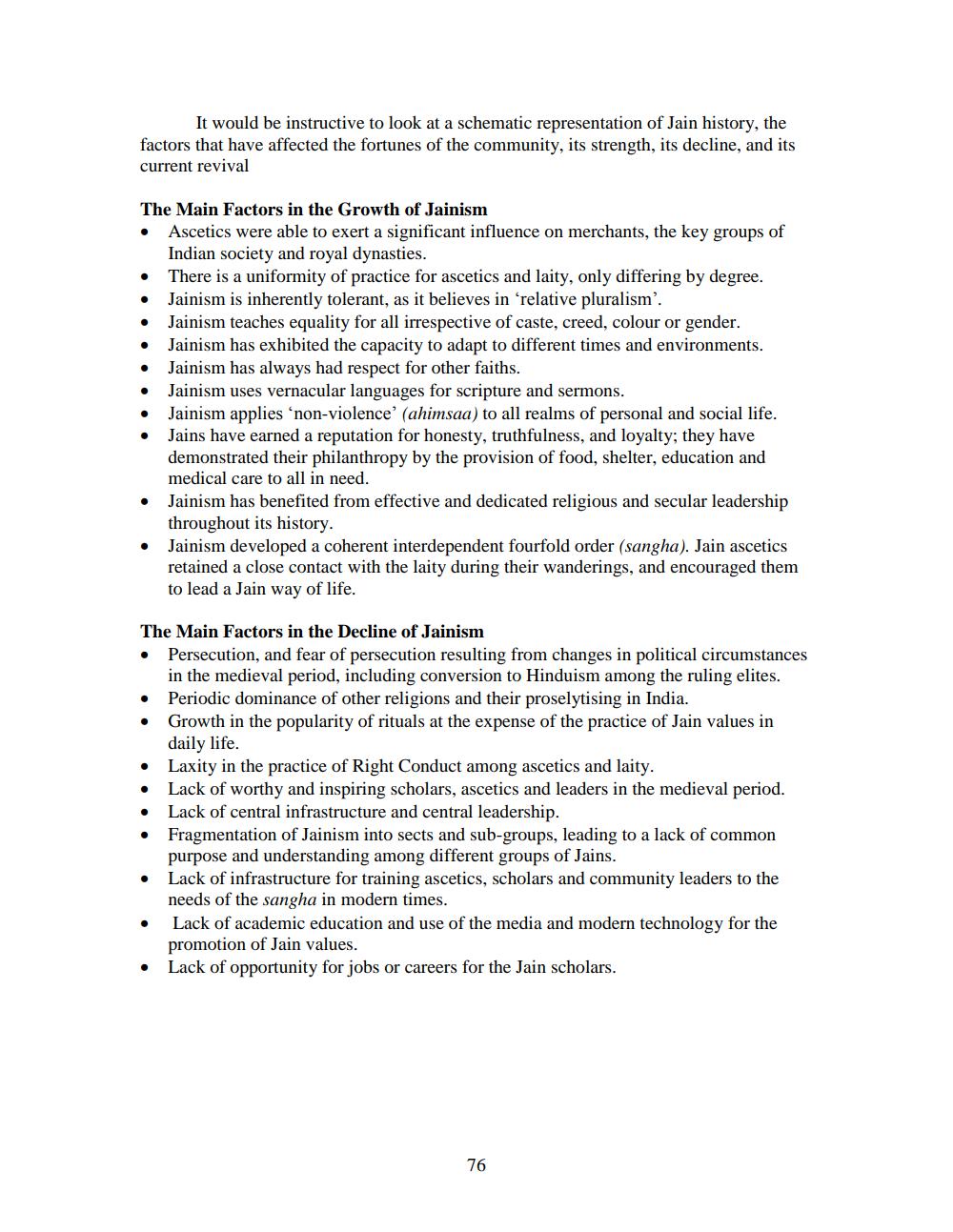________________
It would be instructive to look at a schematic representation of Jain history, the factors that have affected the fortunes of the community, its strength, its decline, and its current revival
The Main Factors in the Growth of Jainism
Ascetics were able to exert a significant influence on merchants, the key groups of Indian society and royal dynasties. There is a uniformity of practice for ascetics and laity, only differing by degree. Jainism is inherently tolerant, as it believes in 'relative pluralism'. Jainism teaches equality for all irrespective of caste, creed, colour or gender. Jainism has exhibited the capacity to adapt to different times and environments. Jainism has always had respect for other faiths. Jainism uses vernacular languages for scripture and sermons. Jainism applies 'non-violence' (ahimsaa) to all realms of personal and social life. Jains have earned a reputation for honesty, truthfulness, and loyalty; they have demonstrated their philanthropy by the provision of food, shelter, education and medical care to all in need. Jainism has benefited from effective and dedicated religious and secular leadership throughout its history. Jainism developed a coherent interdependent fourfold order (sangha). Jain ascetics retained a close contact with the laity during their wanderings, and encouraged them to lead a Jain way of life.
The Main Factors in the Decline of Jainism
Persecution, and fear of persecution resulting from changes in political circumstances in the medieval period, including conversion to Hinduism among the ruling elites. Periodic dominance of other religions and their proselytising in India. Growth in the popularity of rituals at the expense of the practice of Jain values in daily life. Laxity in the practice of Right Conduct among ascetics and laity. Lack of worthy and inspiring scholars, ascetics and leaders in the medieval period. Lack of central infrastructure and central leadership. Fragmentation of Jainism into sects and sub-groups, leading to a lack of common purpose and understanding among different groups of Jains. Lack of infrastructure for training ascetics, scholars and community leaders to the needs of the sangha in modern times. Lack of academic education and use of the media and modern technology for the promotion of Jain values. Lack of opportunity for jobs or careers for the Jain scholars.




